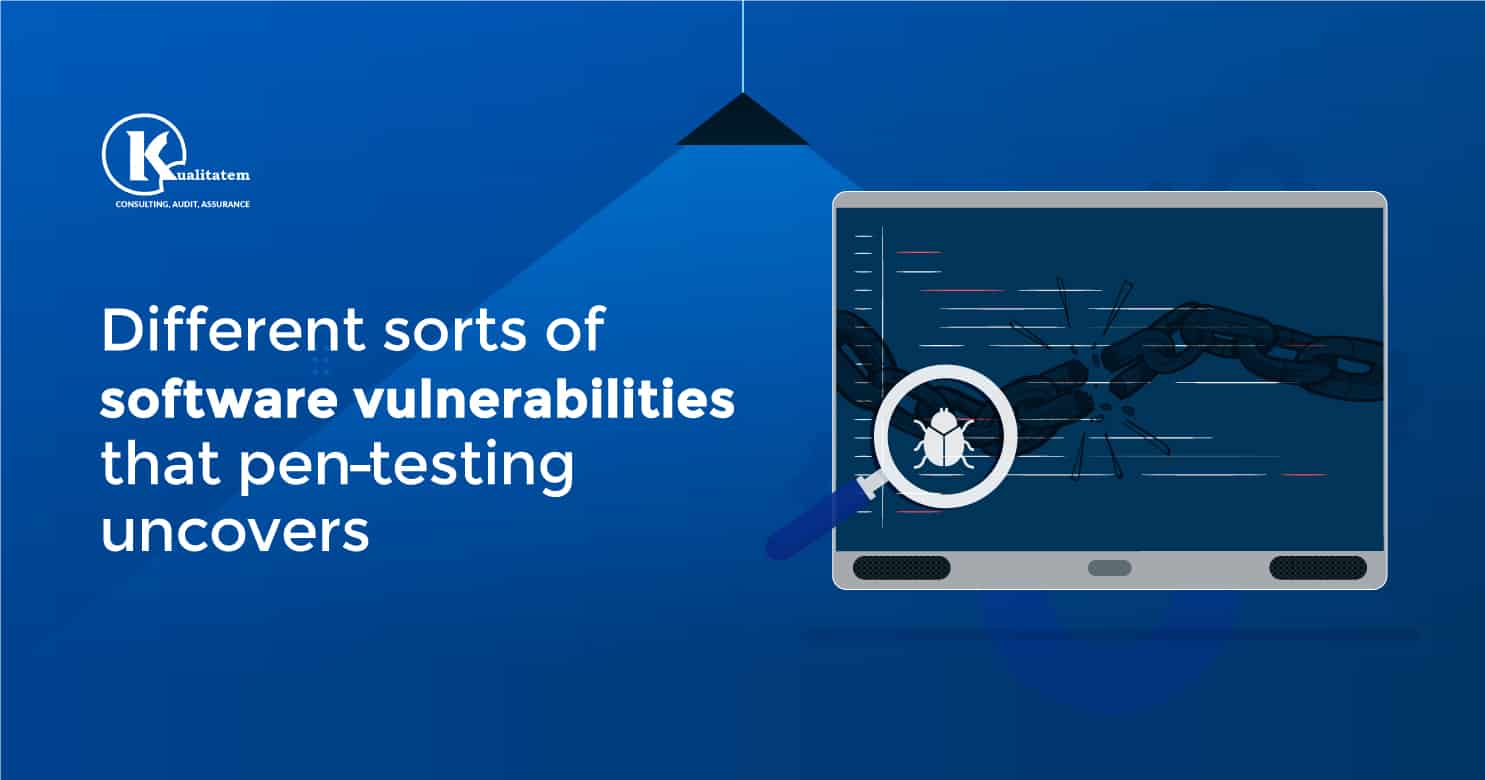Different Sorts of Software Vulnerabilities That Pen-testing Uncovers

- January 3, 2021
- RubabKazmi
Quality assurance is gaining the attention of a large number of organizations today, to make sure that the product quality is satisfying the user’s requirements and is up to the market standards. For the past many years, the business world has been observing fierce competition between firms. This competition is more of a race to fulfill user expectations and requirements by developing something unique and reliable. The one who becomes successful in gaining the trust of their users is usually the winner and market leader. But to win, organizations have to come across a variety of challenges. A user is not willing to buy a product if it’s not reliable and trust-worthy in terms of the product quality, even if it’s different from the alternate products. That is why the quality assurance department is a need of the hour for organizations of every domain especially the software development domain.
When we talk about quality in the software business, we mean how secure, safe, and trustworthy a system is. Safety and security are the most important factors behind the success or failure of any software product or app. Why? Because a software product collects and stores various essential organizational data along with sensitive personal user information. If the software is unable to protect the valuable data and information, then there are no chances of its success in the market because users will not trust the product and rush to the alternate ones. This means that cybersecurity measures must be the soul food for organizations.
With the rapid increase in the use of technology, users are inclined towards the products that provide convenience and are hassle-free. This is an alarming situation for organizations to take specific measures if they want to be a prominent figure in the market by putting in efforts to make their cyber defense strong. By cyber defense, we mean that cybersecurity measures must be incorporated to avoid encountering future hacking activities. For this purpose, conducting penetration testing or acquiring its services from any pen testing company can be the greatest options to avail for any organization. But many people do not know what a pen test involves – particularly the types of vulnerabilities that testing helps to identify.
Some of the most common vulnerabilities that pen testing uncovers are;
Pass the hash value – The method of acquiring data of any length and processing it into a pre-planned length is what we call hashing. Most password challenge and response systems use hashes to convert plain text passwords into strings of letters and numbers, which is meaningless to ordinary users and is random. A malicious intruder will develop a program to intercept the relayed hash data, which can then be used to forge identity verification and gain access to other security systems.
Phishing schemes – One of the simplest tactics that malicious hackers use to get valuable information about the users is by sending them phishing mail which users click unknowingly and become a victim of the hackers trick. This is quite a common way of attacking and gathering important data about users. Sometimes these hackers pose to be the system administrator and ask the users to provide them their passwords for validation and other purposes and users are the innocent ones, who provide them their password credentials.
Fake websites or apps – Another most common way for hackers to hack the user’s personal and sensitive data is the development of fake websites and applications. Hackers fraudulently copy the interface and layout of any original website and then trick the users to sign in with their credentials for the original website.
Unsafe applications that are developed in-house – Normally the applications that are developed within an organization are not properly tested before they are released as compared to the third-party-developed apps. One major category of vulnerability is the input validation flaw, where an outside or client-facing input overrides the legitimate functioning of a subsystem. These include cross-site scripting for websites and SQL injection for applications.
Coding vulnerabilities – One of the easiest ways for hackers to get into a system or software is by exploiting the vulnerabilities in the programming. If errors and mistakes are left untreated in the initial stages of a software product development life-cycle such type of exploitations will surely happen.
Session management – For the sake of improving user-friendliness, session management controls (such as identification tokens or cookies) are used in web applications to get rid of the need for continuous logout and storage of user preferences and logging activities. However, these controls can be easily exploited by hackers for the sake of hijacking the session and gaining higher privileges.
The session management test can help you evaluate whether to create tokens and cookies securely and prevent them from being manipulated.
Reuse of Password – Any individual who uses the same password credentials across multiple websites or platforms is on the verge of encountering a pool of threats by hackers. Hackers have multiple ways to get your password credentials and if you have one password for all platforms then the chances of hacking of data at every platform are extremely high.
One solution for all the issues
Cybercriminals are way more efficient and intelligent than your thoughts. For all the above-mentioned cybersecurity-related issues, penetration testing is considered to be the one-stop solution to tackle these challenges. But it is also important to understand that every business or organization has different needs and requirements. There is no such thing as a “one fits all” penetration test. Every single business owner who is planning to implement the use of penetration tests for its security purposes must have an in-depth understanding of what are its cybersecurity challenges and how pen testing can be carried out.











